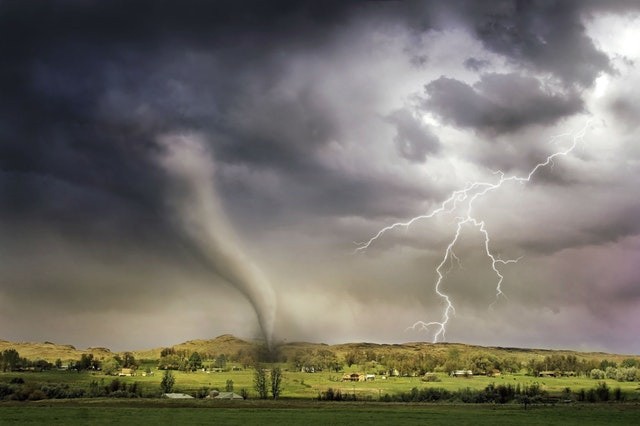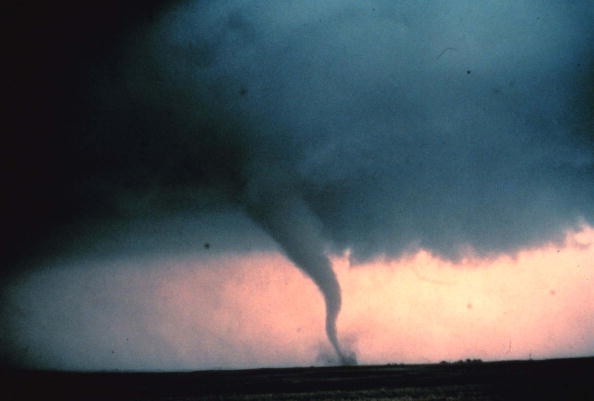When the thought of a tornado comes to your mind, a classic cone-shaped funnel likely follows. But tornadoes can take countless shapes, displaying strange and terrifying characteristics and behaviors. Thereby making these already threatening monsters scarier.
Here are some of the most dreadful tornadoes and circulations of wind to scan the skies for. Also, learn about the distinctive dangers they cause.

1. Rope Tornado
Just like their namesake, rope tornadoes usually twist and bend in their lengthy, tiny condensation funnels. Their wiggles and dents can appear when cool outflow air coming from the rain of thundercloud and hail shaft strike the tornado, weakening its unsteadiness (heat and moisture) and vorticity (air spin) in fixed spots.
2. Rain-Wrapped Tornado
National Weather Service (NWS) office in Amarillo, Texas, explains that if a tornado forms from an increased precipitation supercell thunderstorm - a supercell that stays in an environment where the moisture content is high and lighter winds going into the storm - it can be rain-wrapped, or conceal by the heavy rainfall of a thunderstorm.
Also Read: U.S. Tornadoes Shifting Southeast, Could Be Due to Climate Change
3. Satellite Tornado
Just like a weather satellite orbits the Earth, a satellite tornado goes around a bigger, "main" tornado. While it's a different, secondary tornado, both it and the primary funnel arises from one parent mesocyclone.
Due to the fact that satellite tornadoes are not common and not well-documented, their features and causes are still unknown. But according to a study carried out by NOAA's Storm Prediction Center, they are likely to be related with powerful to violent (EF4 and EF5) main tornadoes, yet are quite weak EF0- to EF2-rated twisters personally.
4. Multi-Vortex Tornado
A multiple-vortex tornado possesses about two or more vortices ( known as "subvortices") swirling inside of a solo tornado. The vortices, which usually take place in groups of two or five, may come together into one great tornado eventually. Multi-vortex twisters and hurricanes are similar in that there is a small lull between the passage of each vortex, according to eyewitnesses.
An example of a multi-vortex storm was Missouri's 2011 EF5 Joplin tornado.
5. Wedge Tornado
If a tornado seems wider than it is tall or looks like an upside-down pyramid, it's possibly a wedge. Their sooty color emerges from the considerable quantity of dirt and debris they take in.
Wedges can be violent EF3, EF4, and EF5 storms, an instance is the 2013 El Reno, Oklahoma tornado, which measured an EF3 on the Enhanced-Fujita scale. It's the biggest tornado in U.S. weather history (a record it still holds during the publiction of this article) at 2.6 miles across.

6. Waterspout
While some waterspouts are actually tornadoes that form over water (their risks include constant lightning, hail, and high surf,) others emerge from rainclouds that don't possess a rotating updraft or mesocyclone. Still, beholding one can be shocking, mostly if you've only ever sighted them on dry land.
Related Article: Central Ohio Tornado Warning Canceled; Extensive Storm Damage Incurred
For more news, updates about tornadoes, whirlwinds and similar topics don't forget to follow Nature World News!
© 2025 NatureWorldNews.com All rights reserved. Do not reproduce without permission.





